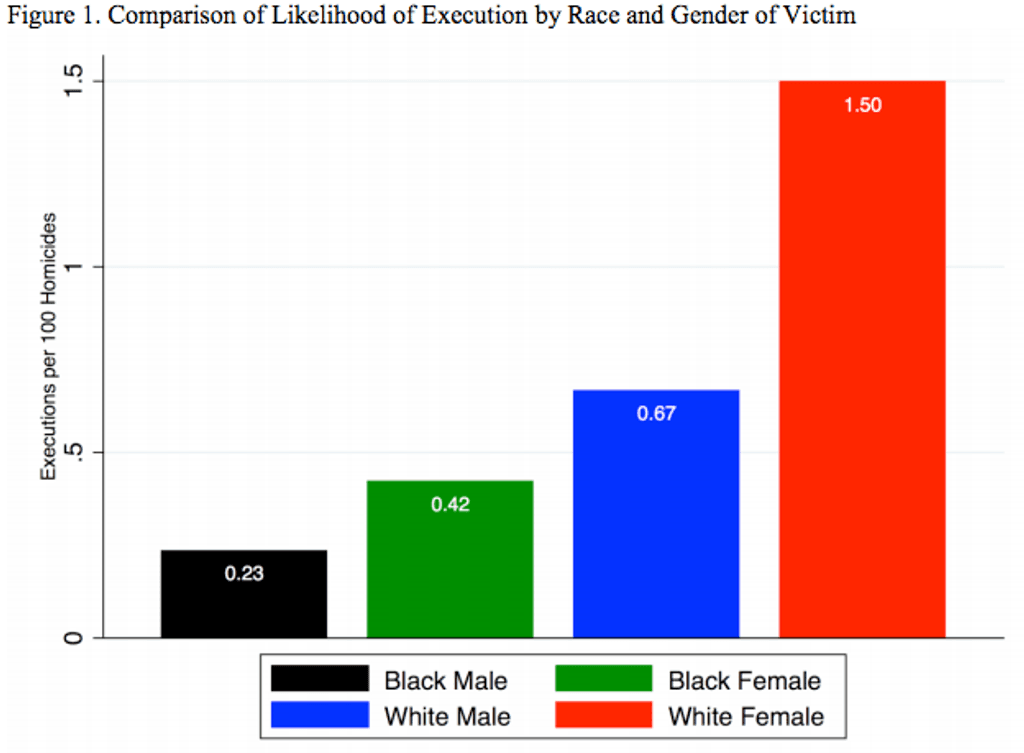
Florida executions are plagued by stark racial, gender, and geographic disparities, according to a new University of North Carolina study, with executions 6.5 times more likely for murders of white female victims than for murders of black males. (See graph, left. Click to enlarge.). UNC Chapel Hill Professor Frank Baumgartner examined data from the 89 executions conducted in Florida between 1976 - when the U.S. Supreme Court upheld Florida’s use of the death penalty - and 2014. Baumgartner found that executions occurred disproportionately in cases involving white victims and victims who were female. While 56% of all Florida homicide victims during that period were white, 72% of all executions involved white victims. Similarly, 26% of all murder victims were female, but 43% of executions involved female victims. 71% of the black defendants executed in Florida had been convicted of murdering white victims. On the other hand, no white person had been executed in Florida for killing a black victim. Baumgartner also found that the state’s use of the death penalty was geographically concentrated, with just 6 of Florida’s 67 counties accounting for more than half of all executions. More than half of Florida’s counties (36) have not produced any executions, and homicide rates were 31% lower in those counties. The study concludes that “factors such as the victims’ race and gender, as well as the county in which the offender was convicted, inappropriately influence who is executed in Florida….These disparities are not measured by a few percentage points of difference. Rather, they differ by orders of magnitude, clearly demonstrating that vast inequities characterize the implementation of capital punishment in Florida.”
(F. Baumgartner, “The Impact of Race, Gender, and Geography on Florida Executions,” University of North Carolina at Chapel Hill, January 14, 2016.) See Arbitrariness and Race.




